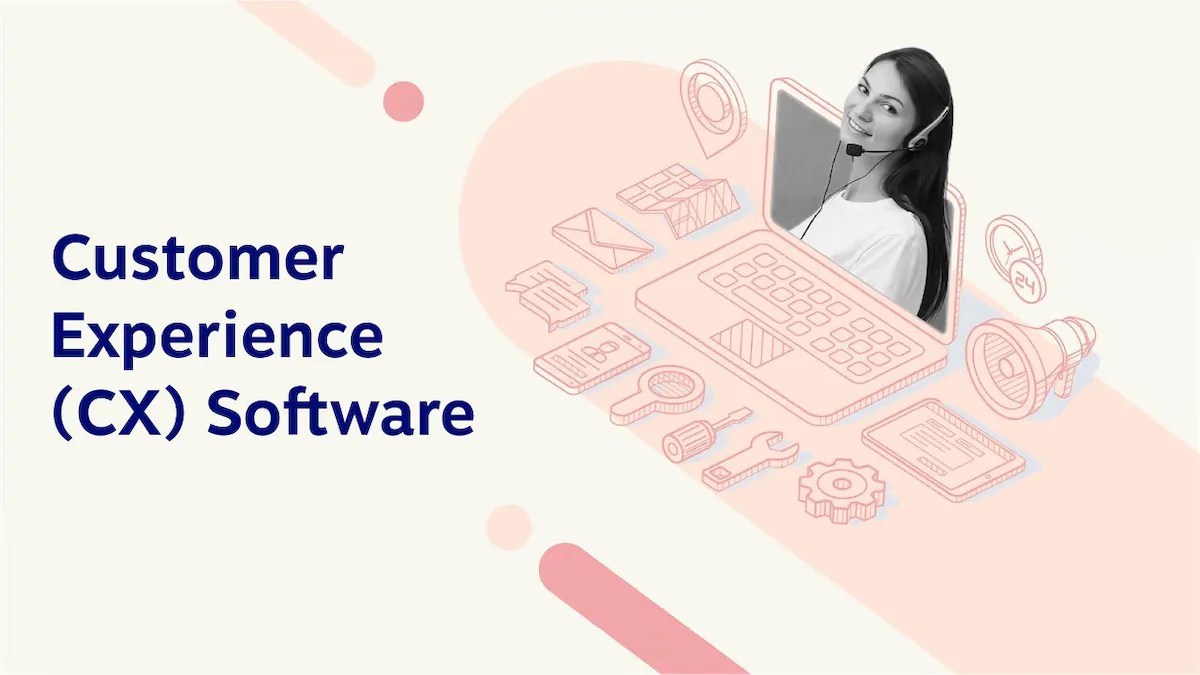Customer success metrics — the name tells you a lot. These metrics measure your customers’ success and, ultimately, yours too.
Although customer success isn’t something that only product-based companies focus on, many of them adopt it to help customers achieve their desired outcomes. Service and high-revenue or high-stakes product businesses also deploy customer success strategies. Several things, like ongoing customer relationship management and product adoption initiatives, play fundamental roles.
Before you read further, it’s essential to understand that customer success doesn’t equal customer service. The former is proactive, and the latter is somewhat reactive.
What’s Customer Success?
Customer success is a proactive business strategy that influences how effectively a customer derives value from a product or service. Customer success aims to improve customer satisfaction to ultimately increase loyalty and retention.
This strategy is focused on empowering customers to realize your product’s true potential for achieving their goals. Customer success teams anticipate customer needs and deliver solutions before problems or issues arise. This not only proactively solves future problems but also shows customers how effectively they can use your product to achieve better outcomes.
Customer success involves more than conveying information or updates; it’s a strategy that enables you to build relationships with your customers by providing reliable advice and advocacy. Customer success demonstrates the actual value of a product or a service to maximize ROI.
How customer success differs from customer service
Customer success aims to drive business growth through long-term customer retention and is proactive and highly strategic. One main focus of customer success is ensuring customers experience ongoing value from businesses’ products and services. This keeps customers satisfied and prevents churn.
Customer service is more reactive. It focuses on issue resolution while solving customers’ immediate problems. Most of the interactions on the service side are onetime and focus on resolving issues quickly while ensuring high customer satisfaction.
7 Key Customer Success Metrics You Need to Track
Numerous metrics can be tracked. But is it necessary to do so? Too much tracking and analyzing will increase your data load, making it harder to reach any conclusions.
You don’t need to examine 20 different metrics to understand how your company’s customer success is faring. Instead, look at these seven metrics and their respective improvement strategies to ramp up your customer success.
1. Customer churn rate
Different organizations use various names for this metric. Some call it logo churn rate, some refer to it as account churn rate, and some simply stick with customer churn rate. It’s the percentage of the total number of customers who stop using your product or service over time.
Companies aim to keep their customer churn rate low. If this rate is high, it suggests that businesses have issues with customer onboarding or engagement, support, or perceived value.

Customer churn rate varies for different industries. According to BCG, the average churn rate for analytics and marketing technology players is 8% annually. This is just a benchmark.
If your churn rate is on the high side based on your industry’s benchmark, it’s not healthy. You need to analyze why your customers are leaving. Is it the pricing, a lack of expected support, or poor experiences?
How to improve customer churn rate
The best way to improve your churn rate is to find out what’s wrong and why your customers are leaving. Do they find it tricky to use your product, or is your competition doing something really well?
Customers might not come to you specifically to convey what’s wrong. If they do, you’re in luck. Follow these steps to keep up with your customers’ changing perceptions:
- Conduct periodic check-ins: Catch up with your customers to find out what they’re dealing with. If you’re catering to multiple stakeholders, someone will share their experience when encouraged effectively.
- Monitor review websites like G2 or Capterra: Use these websites as starting points to assess what can be improved to avoid customer churn. The sites incentivize users to reveal why they dislike particular products or services.
- Create personalized onboarding: Let your customers experience your product’s actual value. Give them guided tutorials that they can refer to quickly to reach their aha moments.
- Run regular Q&A sections, product updates, and continuing education sessions: Make sure your customers are aware that your products and services are evolving. Conduct webinars regularly, and do in-app messaging to ensure customers are updated about new features and functionality. This reinforces value.
2. Net promoter score
Net promoter score (NPS) reflects how likely a customer is to recommend your product or service to a friend or colleague. It gives you a ballpark measure. In scores ranging from 0 to 10, customers who rate your business with a 9 or 10 are seen as promoters who will actively advocate for your brand.

Customers who give you scores of 7 or 8 are the passives. They’re satisfied but not enthusiastic. The remaining ratings from 0 to 6 are given by detractors. These customers are unhappy and might leave negative reviews.
The higher your NPS, the better your customer loyalty and brand advocacy will be. Tesla’s NPS score is 97 out of 100. Experts suggest it’s because of the product, transparency, communication, vision, and buying experience.
Why NPS is important
Most people see NPS surveys as one-time events. In reality, your NPS is a starting point. Getting a high NPS clearly indicates who your brand advocates are and enables you to promote them and establish much more substantial goodwill.
A low NPS allows you to recognize what’s causing your problems. This leads to product or service improvements or customer experience revamps. The faster you make these adjustments, the easier it becomes to rebuild value.
How to improve NPS
To improve your business’s NPS, dig deeper into the ratings to understand why you received them. Remain curious, and ask customers questions about your product, service, or communications. Find out what’s not working, and optimize the things that are. Make a practice of rewarding promoters with a referral program that delivers exclusive benefits.
You need to use NPS strategically, and you shouldn’t overdo it. Send customer surveys when you achieve key milestones. For example, after onboarding a customer, you can ask them to rate their experience or your product.
When you send your surveys strategically, customers will see them as genuine messages. However, customers will lose interest if they keep seeing your NPS surveys popping up in their inboxes out of the blue.
3. Customer satisfaction score
Customer satisfaction score (CSAT) measures short-term customer happiness after an interaction, such as a customer support call or product feature usage. This score gives businesses insights into particular conversations and helps them analyze the quality of specific interactions. NPS measures long-term customer loyalty, while CSAT shows you instantaneous data.

Low CSATs help you identify unsatisfactory conversations and use customer feedback to discover improvement opportunities. For most companies, CSATs reflect their support teams’ effectiveness. The teams take responsibility for customer success when they proactively engage customers by sharing product updates.
How to improve CSAT
Improving CSAT is a team effort, not a one-person job. You must approach it strategically and correctly mix AI-driven automation and human assistance. Because automation is all around you, your account managers can’t just stick with a script — that’s what AI chatbots and other conversational tools are already doing. You need to ensure that your human agents are well-trained so they can offer the service that your buyers expect.
This training will automatically help you improve your first contact resolution (FCR) rate. Agents will be able to meet your buyers’ expectations at the first ask, eliminating the need for back-and-forth.
However, AI is not a foe. It can work constantly without any limitations to serve customers who have common queries. Agentic AI can answer simple questions and complete simple and complex tasks based on triggers. Leverage AI to enable self-service options that customers can seamlessly navigate through.
4. Customer lifetime value
Customer lifetime value (CLV) measures the total revenue a business can expect from a single customer. CLV indicates how well a business retains and grows customers. When your CLV is high, your customer base is very engaged, which strengthens your bottom line.

CLV doesn’t just benefit your average revenue inflow but also helps you acquire new customers through referrals. You don’t need to spend much on customer acquisition to gain new annual recurring revenue. Various upselling strategies also open up, helping you obtain more revenue from each customer.
If your CLV metrics vary widely, you must work on your acquisition strategy and revisit your fundamentals, like your ideal customer profile (ICP). Customers who quickly churn away may not be your ICP, but your entire acquisition strategy might be geared toward them. However, there could be other reasons for your CLV variations, such as poor product-market fit or less exchange of value than presumed.
How to improve CLV
To improve customer lifetime value, offer personalized recommendations that keep customers engaged. This needs to be accompanied by continuous value delivery by your product or service throughout the customer journey.
Dive into the product’s analytics to check the usage pattern of customers who are at risk of churning. Proactively contact these customers to resolve any usage issues or suggest alternative pathways so that they can gain maximum value from your product or service.
5. Monthly recurring revenue
Monthly recurring revenue (MRR) is relevant for subscription-based businesses and SaaS companies. It’s a financial metric, but it ties in nicely to customer success.
Subscription-based businesses need to work hard on customer success; otherwise, the customers won’t continue using or paying for the services. MRR growth occurs from new customer acquisition, active customer retention, and successful upgrades and upsells.
How to improve MRR
There are various ways SaaS businesses can improve their MRR, including:
- Reactivation: Focus on conducting campaigns targeting former subscribers. When they become paying customers once again, they will contribute to your MRR.
- Creation of strategic add-ons: Maximize the revenue growth you obtain from your existing customers by upselling them strategically packaged products or services.
6. FCR rate
The FCR rate measures the percentage of customer issues resolved on the first attempt. This can be a double-edged sword. To increase FCR, support agents sometimes solve problems with quick fixes rather than permanent solutions.

Therefore, you should always look at the FCR rate with CSAT or the number of ticket reopens. These customer success KPIs accurately show how many customer issues were resolved with high-quality support. A high FCR rate generally indicates efficient support and streamlined issue handling. Conversely, a low FCR can mean there are gaps in your training, tools, or processes.
How to improve the FCR rate
Below are different ways businesses can improve their FCR rate:
- Offer training and coaching: Use these sessions to give agents comprehensive knowledge about your products and services. This will help them troubleshoot issues quickly without relying on anyone else for assistance. Most importantly, customer success managers should encourage support agents to keep their integrity high and not risk customer relationships by maximizing FCR.
- Use AI and automation: Deploy chatbots and self-service portals to manage common issues before they escalate. These bots help you be available 24/7 to guide customers, making them feel supported. When chatbots handle monotonous tasks, human agents have more time to resolve critical cases.
- Optimize escalation processes: Implement transparent workflows to more quickly route complex cases to the right experts and make these cases’ transitions feel seamless.
- Analyze recurring issues: Use FAQs or automated chatbots to address issues that come up frequently. If necessary, make product fixes and process changes to prevent customers from repeatedly reaching out to your support agents.
7. Customer effort score
The customer effort score (CES) measures how easy it is for customers to interact with businesses. Do customers have options for getting help when they need it? Or are they obligated to review a series of documents to find the support team’s phone number or email address?

The less effort it takes for customers to contact you, the higher their satisfaction will be. Making it tricky to contact you automatically leads to frustration and churn.
How to improve CES
Below are some ways to improve your business’s CES:
- Make your self-service option easy to access: Provide FAQs, knowledge bases, AI chat, or interactive voice response (IVR) on calls to help customers reach the best asset for dealing with their issues. Customers can select their choice in the IVR and be guided to the right expert in the respective field.
- Reduce wait times: Optimize response times across support channels. This will ensure customers don’t hop to different channels expecting faster responses and will reduce the amount of effort they must make to solve their problems.
- Streamline navigation: Ensure customers can navigate the product and support docs seamlessly without getting lost in a high volume of materials.
Why You Should Be Tracking Customer Success Metrics
Successful businesses are all about forging lasting relationships with customers. A customer success strategy is key to nurturing these relationships. You need data to back your progress, which makes customer success metrics indispensable. When you monitor these metrics carefully and optimize your processes and procedures accordingly, your business will benefit in the following ways.
Reduced churn
Identifying the customers who are at risk of churning allows you to cater to them before they remove themselves from your user base. When you implement proactive strategies to prevent churn, these customers keep on contributing to your revenues.
Increased customer referrals
Effective customer success strategies keep your NPS and CSAT high, which creates more brand advocates for your business and drives your word-of-mouth marketing. This generates more trust in your brand and pulls in more referrals. There’s a positive impact on your bottom line because you don’t have to spend marketing dollars to acquire referrals. You can use some of the money you save to improve your current customers’ experiences.
Net revenue retention
Net revenue retention directly affects your business’s health. This is what your company’s leadership cares about. Customer success metrics enable you to focus on driving up usage and adding new accounts.
Presenting these trends to senior leadership helps you show them the big picture concerning customer success. Companies that have nailed customer success often perceive this as a strategic advantage.
5 Campaign Ideas to Grow Customer Loyalty
Use these ideas to help you formulate customer success strategies and grow a loyal customer base:
- Recognize your VIP customers: Give your long-term customers exclusive perks that satisfy them and make them feel special. You can offer priority support, early access to new features, or special discounts as perks.
- Personalize customer outreach: Leverage AI-driven insights to share recommendations and reminders based on customers’ behavior. This makes them feel like they’re getting exclusive offers.
- Engage customers with webinars: Educate customers about everything that’s going on with your product. Proactively deliver your updates while conveying the best practices for getting maximum value from your innovations.
- Offer loyalty-based discounts: Give tiered rewards based on product usage, the duration of your customers’ subscriptions, or referrals.
- Give early renewal benefits: Encourage long-term commitments by incentivizing users with early renewal benefits such as locked-in pricing or discounts.
Why Nextiva Is the Best Platform for Customer Success Tracking
Nextiva integrates different channels like email, phone, chat, and customer relationship management data into one platform, making it easier to extract insights you can realistically use. This platform helps predict churn and enables businesses to employ personalized customer retention strategies.
With real-time tracking of customer data, Nextiva’s platform empowers businesses to add proactiveness to their customer success efforts. Want to see Nextiva in action?
Get a free demo of Nextiva and drive your customer success strategy with real-time data.
Relationships start with a conversation
Seamlessly manage all of voice, video and messaging with customers and team on a unified platform. Easy to set up and scale. Future-proofed for tomorrow.

















 Customer Experience
Customer Experience 








